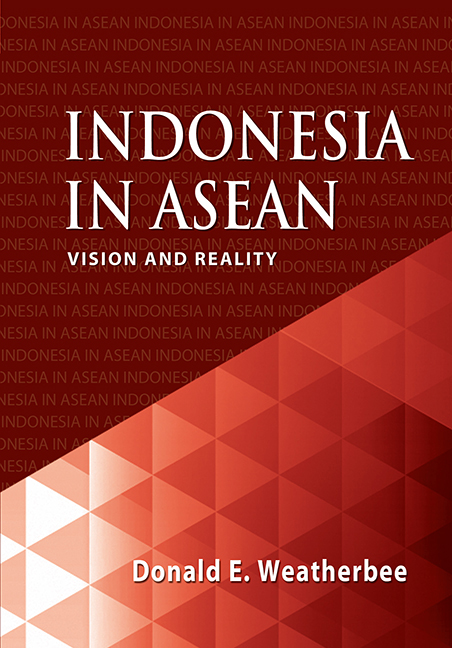Book contents
- Frontmatter
- Contents
- Editorial Note
- Acknowledgements
- About the Author
- Introduction
- I The Visible Indonesia
- II Indonesian Policy Foundations
- III Democracy in Indonesian Foreign Policy
- IV Islam in Indonesian Foreign Policy
- V Indonesia, ASEAN and Regional Political Stability and Security
- Conclusion
- Addendum
- End Notes
- References
I - The Visible Indonesia
Published online by Cambridge University Press: 21 October 2015
- Frontmatter
- Contents
- Editorial Note
- Acknowledgements
- About the Author
- Introduction
- I The Visible Indonesia
- II Indonesian Policy Foundations
- III Democracy in Indonesian Foreign Policy
- IV Islam in Indonesian Foreign Policy
- V Indonesia, ASEAN and Regional Political Stability and Security
- Conclusion
- Addendum
- End Notes
- References
Summary
A quarter of a century ago, Donald Emmerson, one of America's most astute observers of Indonesian affairs, wrote an article for Foreign Affairs titled “Invisible Indonesia” (Emmerson 1987). The premise of the article was that the significance of a country and the attention it receives are separate matters. In an almost prescient way, he asserted that Indonesia's visibility would increase in the years ahead. His dependent variable at the time of writing was stated, “What will make Indonesia better known is its success or failure in selecting someone to replace General Suharto.” Now, well into the post-Suharto era, we can still endorse his conclusion that “in a zigzag trajectory of its own, invisible Indonesia will make its presence known”. The erstwhile “invisible Indonesia” has become a very visible Indonesia in both its regional and global international settings.
The zigzags along the trajectory that brought Indonesia its new visibility were sharp and, for policy, daunting. Not the least was overcoming the obstacles left in the political and economic wreckage of the collapsed Suharto regime: political instability, the lingering impacts of the Asian economic meltdown, ethnic and religious violence, and, of course, the separatist war in Aceh. Through the first half-decade after Suharto's fall, many Indonesia watchers were concerned that the country showed all of the earmarks of a failing state (Weatherbee 2002). Far from failing, President Susilo Bambang Yudhoyono leads a nation that is globally recognized as a political and economic success story. Indonesia has emerged in the past decade as a signally important middle-power player on the international stage whose friendship and cooperation are sought by the world's greater powers. A myriad of books, book chapters, and articles have documented Indonesia's rise to new prominence in world affairs.
Although Suharto's Indonesia may have been globally “invisible”, during the second half of his regime Indonesia had experienced a “rise”. By the early 1990s it was the dominant regional power in ASEAN, an important player in East Asia and the Pacific, and through the Non-Aligned Movement (NAM) a leader in the developing world. In its international role and status, the country was defined as a “pivotal state” (Bresnan 1999). The features of a pivotal state include physical size, large population, important geographical location, and, most importantly, capacity to affect regional and international stability.
- Type
- Chapter
- Information
- Indonesia in ASEANVision and Reality, pp. 1 - 10Publisher: ISEAS–Yusof Ishak InstitutePrint publication year: 2013

